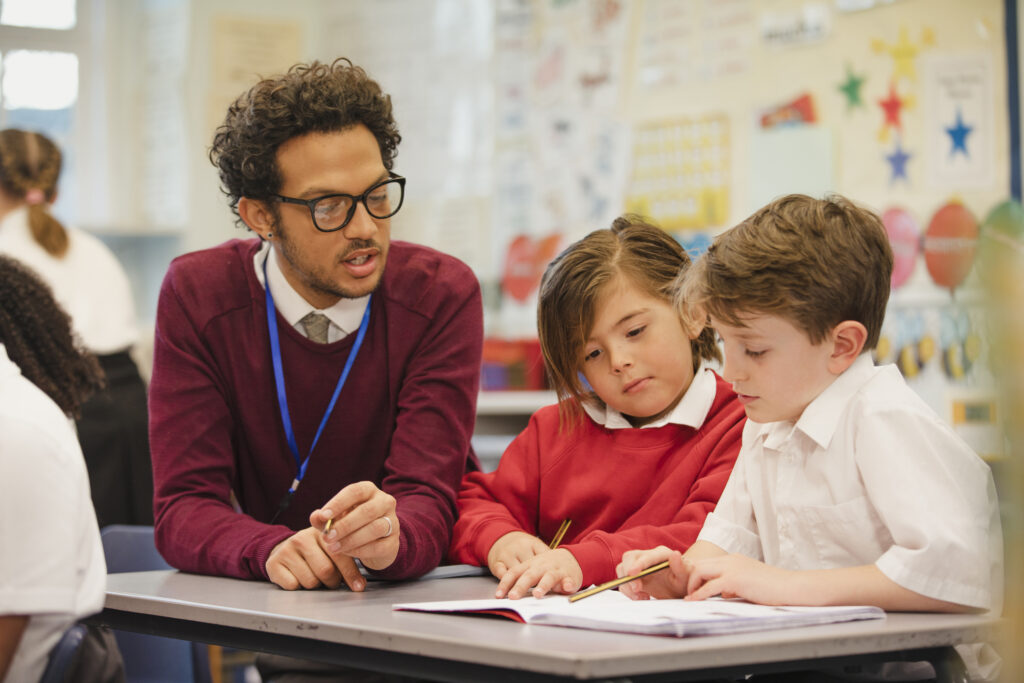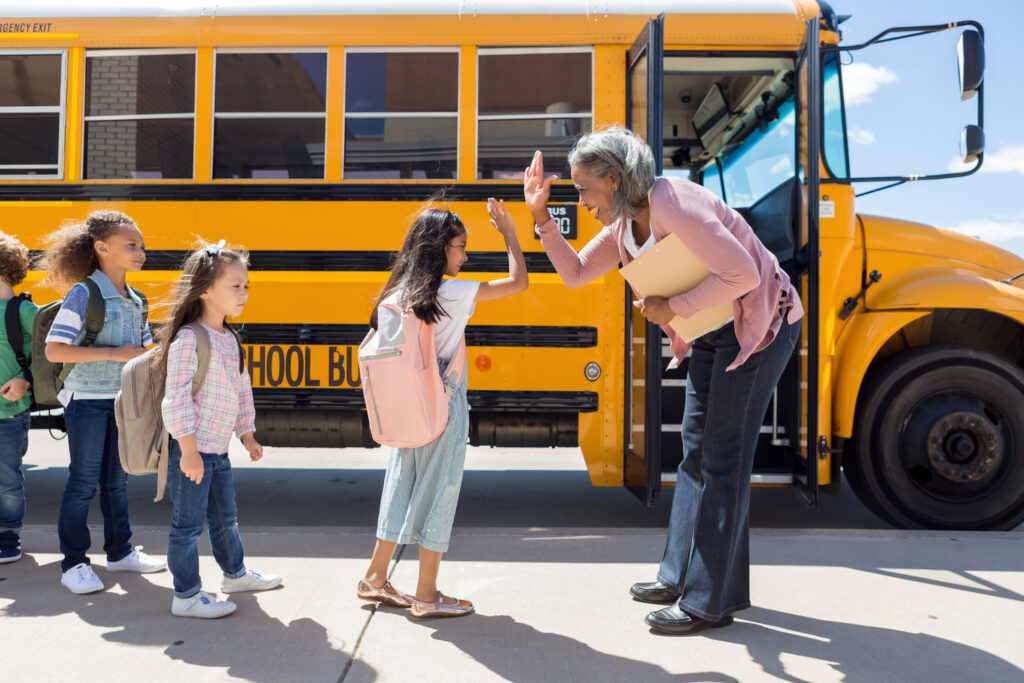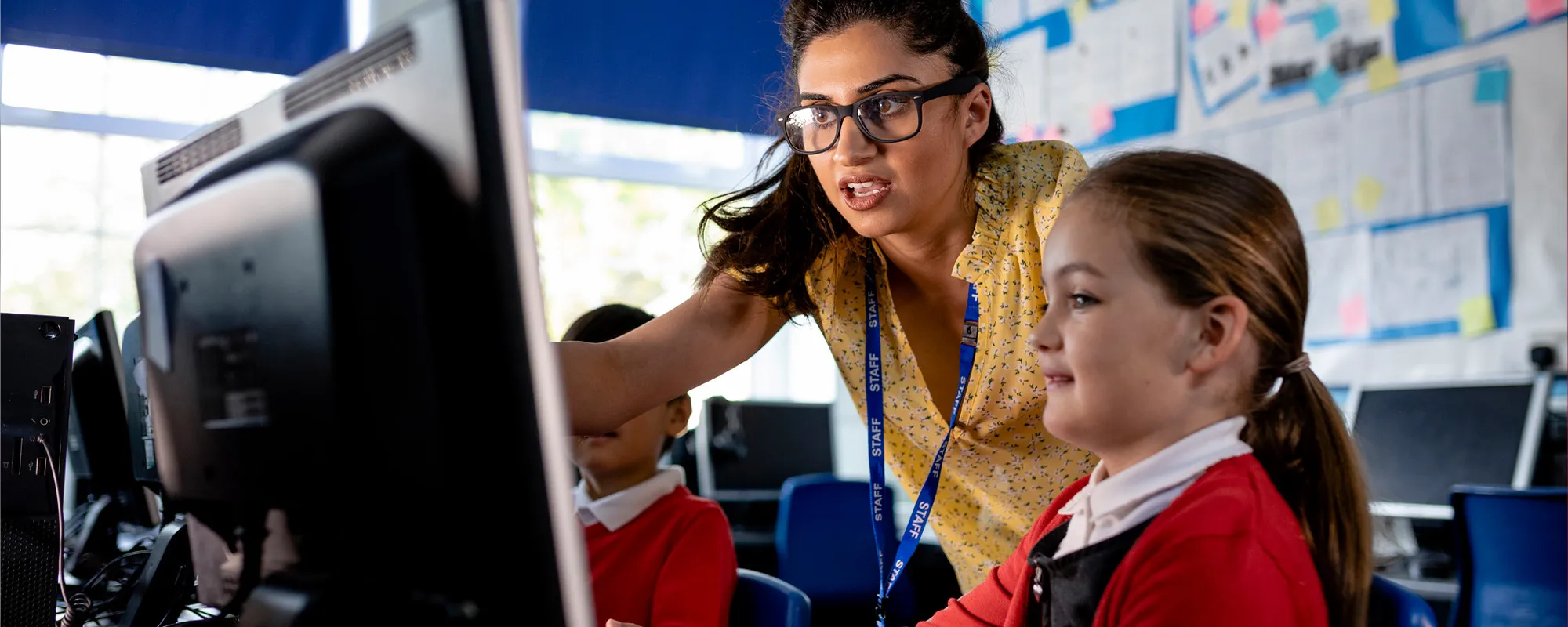July 8, 2021
Effective classroom management is essential to successful learning. And while managing a classroom full of students has always presented challenges, educators faced a whole new world this past year in hybrid and remote learning environments.
We wanted to know what was working for teachers in various settings and how that compared to a traditional, in-person classroom. We started by revisiting Robert Marzano’s seven core classroom management practices. We then read as many articles as we could find about effective classroom management in remote and hybrid settings.
What we found across the articles was no surprise: the core principles of effective classroom management apply to virtual settings just as much as they do to physical classrooms.
Here’s why.
7 positive classroom management practices for any environment
As we prepare for the start of a new school year, it’s important to acknowledge that Marzano’s seven core practices apply whether we’re in remote, hybrid, or in-person settings. Use these seven practices to establish classroom management routines at the beginning of every school year.
#1: Classroom rules
Teachers spend the first days and weeks establishing community with their students. Part of that community-building involves the establishment of rules and norms.
We know that classroom rules must be intentional and clearly written, and that every member of the classroom community should understand the meaning of the rules. We also know that involving students is recognized as a best practice for both the development of classroom rules and the consequences for breaking them. Involving students ensures age appropriateness and relevance and helps students rationalize the concept of rules.
With remote or hybrid learning, students should still be involved in establishing classroom norms.
It is important to engage in open discussion and be transparent when talking to students about the difference between classroom rules and remote rules. Compare and contrast in-classroom rules and remote rules with students, discuss, and give opportunities to model and practice.
#2: Consequences
Consequences can be both positive and negative. They not only need to be appropriate and fitting for the students’ age level, but they must also be fair. Consequences are most effective with an immediate response and then sustained reinforcement. What this means is that you would have an appropriate consequence in the moment for some type of behavior.
While we know that positive consequences have resulted in a decrease in the need for behavioral interventions, it is important to remember that when the consequences are negative, they should be extended with additional reflective and restorative practices.
Student involvement in determining consequences is extremely valuable, regardless of the setting. With hybrid or remote learning, consequences can be tricky. But similar to rules, having an open discussion about how consequences are the same or different between in-person and remote learning is a great place to start.
An important thing to remember for remote and hybrid learning is that a lot can be happening in the students’ learning environments. Students need to feel that they will not face negative consequences when distractions in their environment are out of their control.
Create a signal for students to share with their teachers when this is happening. The signal should be discreet and should not distract the entire class.
Teachers must remember to openly discuss the similarities and differences between what works in a classroom versus a remote learning environment. Establish clear expectations for the classroom environment, such as:
- Creating consequences
- Setting incentives
- Generating ideas for rewards together with students
And remember to redirect and ask questions before giving a consequence.
#3: Procedures
Procedures are often confused with rules because they may result in consequences when not followed. However, procedures fundamentally differ from rules because they define specific actions instead of expectations for behavior. That said, establishing processes and procedures is vital to effective classroom management.
In a sense, procedures are helping to lift some portion of the mental load for students. Consistency and predictability in procedures allow students to move smoothly through their day.
For example, there will be less time spent in transitions and more time spent engaged in learning if students are fluent in the procedures for different transition scenarios. Transitions are a perfect example of where clear procedures are necessary to mitigate behavior problems.

With regard to remote or hybrid learning, having consistent procedures allows you to manage this shift between websites, platforms, and breakout rooms more fluidly.
Remember to model and practice online procedures with students. Use emojis or gifs to gauge where students are each day, and allow students a consistent amount of time to get settled at the start of class. Post the expectations clearly and practice, practice, practice so that students can flow seamlessly through the day.
#4: Withitness
“Withitness” can be defined as the disposition of a teacher to quickly and accurately identify problematic behavior or—even better—potential problematic behavior, and intervene immediately.
It’s about how aware the teacher is of what’s really happening in the classroom. Withitness teachers possess the ability to have eyes everywhere, which allows them to minimize misbehavior. (When students feel that their teachers know what’s going on all the time, they are generally less likely to engage in poor behavior.)
This looks different and is much harder in remote settings, especially when students have cameras and microphones turned off. In a remote setting, teachers have to be realistic that some students are going to engage in off-task behavior, so it is necessary to send clear messages that you are paying attention.
Here are a few tips on how to stay engaged with your students:
- Be aware of body language and facial expressions, whether in person or on camera
- Use inflection and expression when speaking
- Use questions and redirection to keep students engaged
- Say students’ names when speaking
- Participate with students in groups/breakouts
- Let student interests guide instructional topics
- Be honest, be real, and model enthusiasm
Supercharge data-informed decisions
Discover tools from Renaissance that provide whole child data to inform decision making.
#5: Engagement
According to The Glossary of Education Reform, student engagement is “the degree of attention, curiosity, interest, optimism, and passion that students show when they are learning or being taught, which extends to the level of motivation they have to learn and progress in their education.”
We know that students need to be engaged in content to learn and that choice is a powerful motivator. When students are motivated, engagement is high. When engagement is high, classroom management tends to fall into place, and rules and expectations are followed more clearly.
We know that content has to be relevant so that interest and curiosity are piqued. At the same time, teachers are responsible for making standards-driven content relevant to diverse groups of students, so how educators deliver the content is vital to engagement.
When teachers and students are in the same physical space, they have the opportunity to engage in group activities that include choice. They may:
- Vary time spent sitting versus moving around
- Use manipulatives/physical objects to support learning
- Engage in deeper reasoning and activity-based settings
In a remote or hybrid environment, teachers can still do many of the same things; however, it takes some creativity and planning.
Create a space, like breakout rooms, where students have the opportunity to collaborate in both learning and play activities. Both are equally important in development.
Teachers can also get creative and plan learning and/or play activities with other classrooms, schools, or even districts. Connecting to those outside of the classroom is, in some ways, easier in a remote environment.
Keep students moving! Find ways for them to move around just as in the classroom. In remote and hybrid situations, students can:
- Go on word or object hunts
- Find items in their homes that support a personal or fictional story
- Engage in exercise
- Share personal items they love, like pets, toys, or gadgets
No matter what types of creative ways are used to keep students engaged in learning, let students know what the criteria are ahead of time. Post them, keep them on a screen, and say them. Allow students to practice the procedures so that behavior is ideal and engagement is high.
#6: Emotional stability
Positive teacher-student relationships are essential for learning. Where withitness is about a teacher’s ability to identify positive and negative behaviors accurately, emotional stability speaks more to a teacher’s ability to react objectively, fairly, and appropriately.
It is key that a teacher, who is a trusted adult, responds fairly and in a way that feels safe, authentic, and genuine to a student.
In remote learning environments, forging relationships through screens has presented new and considerable challenges. Educators are not only building relationships with students in new ways, but also with caregivers. And teachers face the additional challenge of needing to provide opportunities for students to build relationships with each other, all while creating safe remote environments.
While teachers who are going back into classrooms this fall can rely on in-person relationship building, those who remain in remote or hybrid environments may want to remember the following:
- Have scheduled office hours, and also have consistently scheduled 1:1 time with students.
- Set conversation norms, models, and practice. Norms support equity of voice and foster a feeling of safety.
- Use tech tools such as interactive whiteboards that allow students to interact with each other and with you, and that allow you to see students’ work and provide feedback in real time.
- Embrace cultural differences. Help students understand their differences and how they can all be celebrated. Consider bringing in guest speakers to help students learn about people who are the same as or different from those who live in their homes.
- Let students inside your world a bit. Don’t be afraid to show that it is not necessarily easy to be working and learning from home.
#7: Communication with families and caregivers
Communication with families and caregivers doesn’t often get included in classroom management techniques. However, the students who enter your classroom, whether physically or remotely, live with families and have interactions with them every day that impact the teaching and learning that happens in your classroom.
It is key that you are communicating your philosophy and expectations and that you are continuously sharing updates, both academic and social-emotional behavior (SEB), and both negative and positive.
Whether in-person or remote, the key takeaway is to be vigilant, clear, and consistent with your communication. When approaching the start of a new school year, be relentless with connecting before the school year starts. Let caregivers know the best way to communicate, and post this information prominently on:
- The school website
- A class homepage
- Your email signature
Be consistent and involve students. Send weekly emails and set a schedule for recurring phone calls. Involve students in communication by creating a class newsletter, involving them in weekly email updates, and including them on parent calls.

Why is positive classroom management so important?
Positive classroom management is critical to the success of every teacher for several reasons:
- Creating a positive learning environment. A positive classroom management approach helps to create a safe and supportive learning environment. When students feel comfortable and secure in the classroom, they are more likely to engage in learning activities and participate in class discussions.
- Enhancing student learning. Positive classroom management helps create an environment that is conducive to learning. When students are focused and engaged in the learning process, they are more likely to retain the information they learn.
- Reducing disruptive behavior. A positive classroom management approach helps to reduce disruptive behavior in the classroom. When students feel valued and respected, they are less likely to engage in disruptive behavior.
- Improving relationships. Positive classroom management helps build positive relationships between students and teachers. When students feel valued and respected, they are more likely to form positive relationships with their peers and teachers.
- Increasing student motivation. A positive classroom management approach helps to increase student motivation. When students feel valued and respected, they are more likely to be motivated to learn and succeed.
What is the best classroom management style?
There is no one “best” classroom management style, because different approaches may work better for different teachers and student populations. However, research suggests that a positive and proactive approach tends to be more effective than a punitive or reactive approach.
Positive classroom management involves creating a supportive and respectful learning environment where students feel valued and engaged. This approach emphasizes clear expectations and routines, positive reinforcement, and building positive relationships with students.
Some specific strategies that may be effective in a positive classroom management approach include:
- Establishing clear expectations and routines for behavior and academic tasks.
- Using positive reinforcement, such as verbal praise, rewards, and incentives to encourage positive behavior.
- Building positive relationships by showing interest in students’ lives and providing opportunities for them to connect with their peers and the teacher.
- Using restorative justice practices to resolve conflicts and repair harm rather than using punishment as the primary response to negative behavior.
- Providing opportunities for student choice and autonomy in their learning.
Renaissance: Providing whole child data to support teaching and learning
eduCLIMBER is an MTSS management and collaboration platform that brings together a wealth of student data, including:
- Academics
- Social-emotional behavior
- Attendance
- Behavior incidents
- Interventions
- School climate and culture
- Qualitative data and teacher notes
- Social-emotional learning surveys
- Student plans
eduCLIMBER’s interactive reports and dashboards help you to identify and support students’ needs in any learning environment, and to use data-informed decision making to improve student outcomes.
Connect with an expert to learn more about eduCLIMBER and other solutions from Renaissance to support today’s classrooms.

